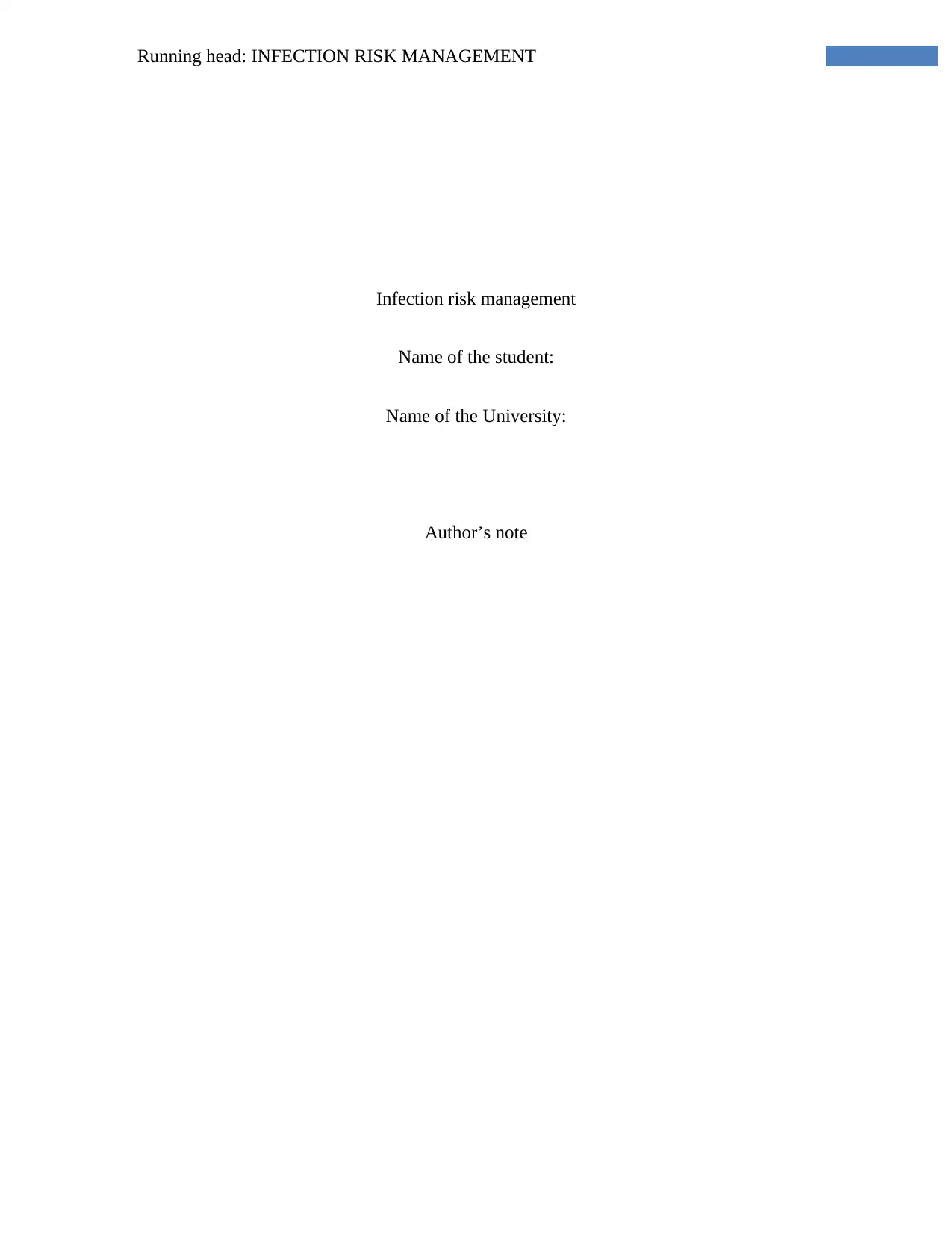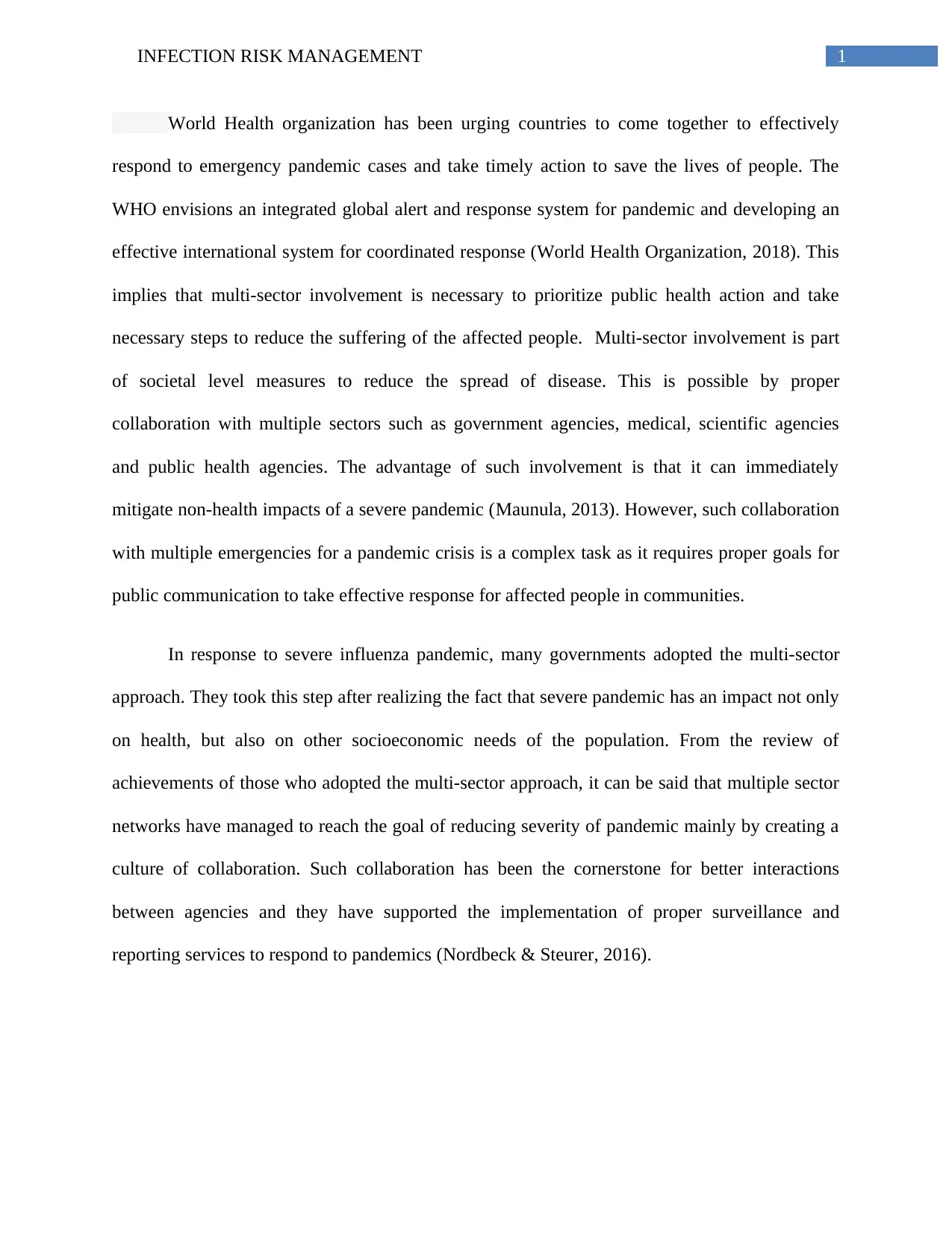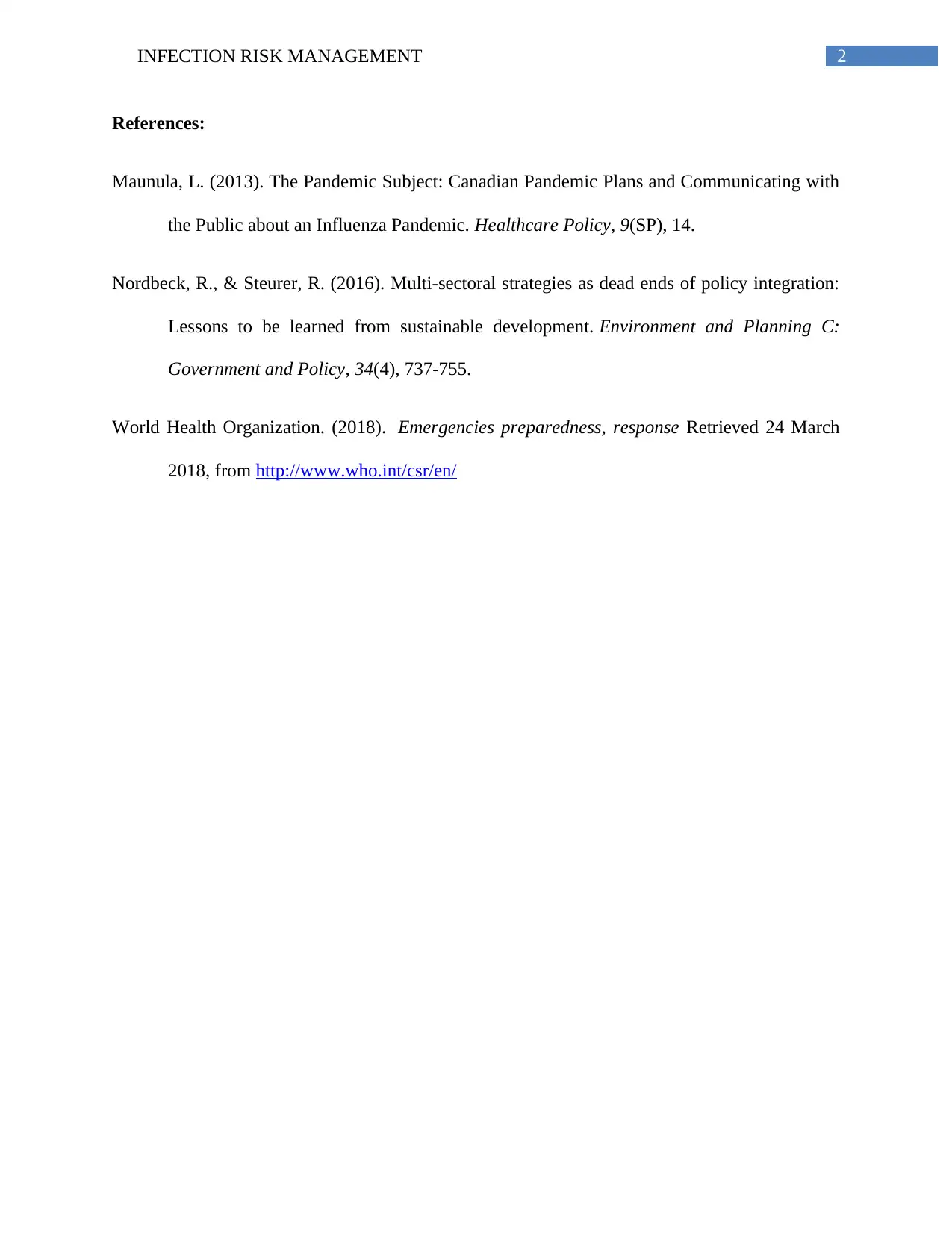Infection Risk Management Report on Pandemic Response
VerifiedAdded on 2021/04/17
|3
|423
|30
Report
AI Summary
This report delves into the critical aspects of infection risk management, emphasizing pandemic response and the multi-sector approach. The World Health Organization (WHO) advocates for a global alert and response system, necessitating collaboration across various sectors like government, medical, and public health agencies. This integrated approach aims to mitigate the impact of pandemics, focusing on reducing the severity of outbreaks through effective communication and coordinated action. The report highlights how multi-sectoral strategies have been instrumental in improving surveillance and reporting, ultimately fostering better interactions between agencies to combat the spread of diseases. The importance of these collaborations is emphasized by the successful implementation of the approach by many countries.
1 out of 3










![[object Object]](/_next/static/media/star-bottom.7253800d.svg)